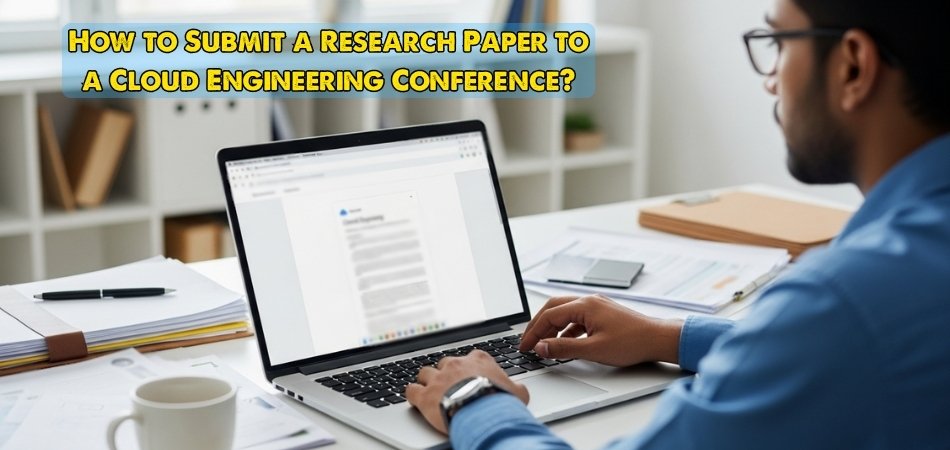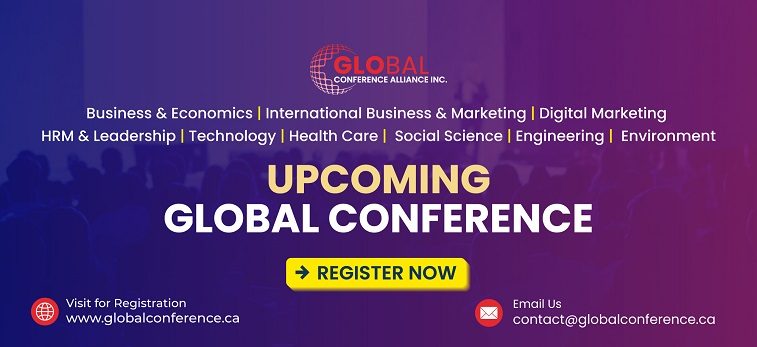Cloud engineering conferences are exciting places where new ideas and smart solutions are shared. If you’ve done some good work and want others to see it, submitting a research paper can be a great way to get noticed. Now you may ask, how to submit a research paper to a cloud engineering conference?
To submit a research paper, you must first choose a conference that matches your topic. Then, read the rules carefully and follow them. Write your paper clearly, check for mistakes, and ask for help if needed. Once it’s ready, upload it to the conference website before the deadline and wait for a reply.
Do you want to know what happens after sending your paper? Or are you curious about how to find the right conference? Keep reading—this article has all the steps you need to understand the full process with ease.
How to Submit a Research Paper to a Cloud Engineering Conference?
If you’ve worked on something cool in cloud engineering and want to share it with others, sending your paper to a conference is a great idea. It may sound a bit tricky at first, but don’t worry. You don’t need to be an expert to do this. It just takes a few simple steps and some planning. Let’s look at how you can do it:
Choose the Right Conference
First, you need to find a cloud engineering conference that matches your topic. Some focus on simple ideas, while others like complex ones. If you’re planning for global events like conferences in USA, Canada, or any other country, make sure the topic matches your paper. Read about what the conference is looking for. Also, check the deadline and other details on the official website.
Know the Rules
Every conference has its own rules for paper submission. These rules tell you how long your paper should be, what format to use, and how to send it. You must follow them carefully, or your paper might get rejected. The rules are usually easy to find on the website. Reading them fully before you begin is a smart move.
Write the Paper
Start with a title and short summary of your idea. Explain the problem you worked on and how you solved it. Try to write clearly so others can understand without guessing. Use simple words and short sentences. Add pictures or charts if they help explain your idea better.
Ask for Help
It’s totally okay to ask someone for help with your paper. They can check your writing, help you fix mistakes, or give feedback on your idea. You can also read past papers to see what a good one looks like. Getting advice can make your paper stronger. Even small tips can help a lot.
Submit the Paper
Once your paper is ready, go to the conference website and find the submit page. You’ll need to fill in your name, paper title, and maybe a short description. Then upload your paper file and double-check everything. After you send it, you’ll get a message or email that confirms they got it. Save that message just in case.
Wait for Reply
After you send your paper, the review team will read it. They will decide if it’s a good match for the conference. This can take some weeks, so be patient. If your paper is not accepted, that’s okay—try again next time. If it is accepted, you’ll be told what to do next.
Share Your Work
If your paper gets picked, you may get to talk about it at the event. You could give a talk or show a slideshow. It’s a fun way to tell others about your idea. You can also meet people who like the same things as you. Don’t stress—just enjoy and share what you did.
How to Structure Your Cloud Engineering Research Paper for Maximum Impact?
Putting your ideas into a paper is one thing—but making that paper clear and powerful is something else. A strong structure helps readers understand your work without getting lost. Keep reading to learn how to make every part count.
Start with an Outline
Think of your outline like a simple map of your paper. It helps you plan where everything goes, so you don’t leave anything important out. List your main sections first—like the introduction, method, results, and conclusion. Then, under each section, write a few points you want to include. This makes your writing easier and more focused.
Focus on the Title
Your title is the first thing people see, so make it clear and sharp. Try to tell what your paper is about in just a few words. Use simple language, but make sure it sounds smart and interesting. Avoid long or confusing titles that don’t really say anything. A strong title can help your paper stand out, even before anyone reads it.
Write a Strong Intro
Start your introduction by explaining what your topic is and why it matters. Then, tell what problem you’re trying to solve and how your paper will help. Try not to make it too long—keep it short and clear. The goal is to grab attention and guide the reader into your paper. This is the part that makes people want to keep reading.
Explain Your Method
This part shows what you did to solve the problem or test your idea. Explain each step in a clear and simple way. Use short paragraphs to break down your process. It’s very important to keep things well-organized—because writing a Cloud engineering conference paper with a clear structure and technical focus is key to getting accepted. If something is too hard to explain in words, you can use a picture or chart to make it clearer.
Show the Results
After you talk about the method, share what you found. Use real numbers or facts, and explain them in a way that’s easy to follow. Charts or graphs are helpful here, too. Try not to make this part too wordy—just tell what happened. This section shows whether your idea worked or not, and how strong your results really are.
End with a Conclusion
Wrap things up by saying what your results mean and why they matter. Don’t add new ideas here—just sum up what you already said. Keep it simple, but make sure it feels complete. A strong ending helps people remember your work. You can also mention if someone could build on your idea in the future.
Why Picking the Right Cloud Engineering Conference for Your Research Paper Is Important?
Choosing the best cloud engineering conference can make a big difference for your research paper. Not all conferences are the same or offer the same benefits. Here’s why picking the right one is so important:
- Audience Fit: A well-matched conference means your paper will be read by experts who care about your topic, boosting real interest.
- Relevant Feedback: Good conferences give you advice from people who understand your subject, which helps improve your research further.
- Networking Chances: Meeting others with similar interests leads to helpful contacts and new ideas you might not find elsewhere.
- Publication Value: Papers from respected conferences look stronger on your record and are valued more in the professional world.
- Better Questions: Presenting to the right crowd means you’ll get smart, on-topic questions that help you think deeper about your work.
- More Opportunities: Some conferences offer awards or chances for your work to be published in special issues, opening even more doors.
- Stronger Reputation: Sharing your paper at a well-known event can build your reputation and show you take your research seriously.
- Future Growth: The right conference can inspire your next project and help you see what’s new and important in your field.
Mistakes to Avoid When Submitting a Cloud Engineering Conference Research Paper
Sending your research paper to a cloud engineering conference is a big step, but simple mistakes can cause problems if you’re not careful. These small slip-ups can even stop your paper from getting accepted. To keep your chances strong, it’s good to know what to avoid. Let’s look at some common mistakes and how to skip them.
Using Old Versions
Sometimes people forget to check which version of their paper they’re sending. They end up submitting an older draft by mistake. This can lead to missing details or wrong information in the final paper. Always double-check your file before uploading. Make sure it’s the latest one with all edits included.
Wrong File Format
Every conference asks for a specific file format like PDF or DOCX. If you send a different format, your paper might not open. That can cause delays or even disqualify your paper. Check the submission rules to see what format is needed. Save your paper the right way before you send it.
Missing Author Details
Leaving out co-authors or spelling names wrong is a common mistake. Everyone who worked on the paper should be listed clearly. Add their names, emails, and other details just like the guidelines say. Make sure nothing is missing or spelled wrong. That way, no one gets left out or confused.
Submitting Too Late
Many people wait until the last minute and miss the deadline completely. If the clock runs out, you can’t send anything. Always try to submit a few days early, just in case of problems. Internet issues or file problems can waste time. Being early is always safer.
Skipping Final Check
It’s easy to forget one last read-through, but it really matters. Small mistakes in grammar, spelling, or layout can hurt your paper. Taking a few minutes for polishing your cloud engineering conference research papers can make them look more professional and clear. A clean, error-free paper looks better and is easier to read. Allow yourself some extra time to go over everything. You’ll feel more confident when you hit submit.
Ignoring Instructions
Each conference has its own rules, and missing even one can cause issues. Some ask for specific fonts, spacing, or word limits. If you ignore these, your paper may not be accepted at all. Read every part of the guideline page slowly. Follow each step just like they ask.
What Happens After You Submit Your Cloud Engineering Research Paper?
After submitting your research paper to a cloud engineering conference, you may believe you’ve completed your task, but there’s still more to do. A few important steps happen before your paper gets accepted or shared. Each step plays a big role in the final result. Continue reading to learn what happens next and why it matters.
Paper Review Begins
Your paper is sent to experts who review it after submission. These people are called reviewers, and they check if your work makes sense and adds something new. They don’t know who wrote the paper, so they judge it fairly. They also look at how clear your writing is and how strong your results are. This step usually takes a few weeks.
Comments from Reviewers
Once the reviewers finish reading, they send back comments. These notes may point out parts that are confusing or need more detail. Sometimes they praise what you did well, too. All of this feedback helps improve the paper. Don’t feel bad if there are lots of comments—it’s all to help make your paper stronger.
Fixing the Paper
After you get the feedback, you may be asked to fix some things. This could mean explaining a part better or correcting small errors. You’ll be given time to make these changes and send the paper again. It’s important to take the comments seriously and follow them closely. Fixing things properly gives your paper a better chance of being accepted.
Final Decision
Once the revised paper is sent back, the reviewers or the main team will look at it again. Then they decide if it gets accepted or not. Sometimes, they might still reject it even after changes. But often, if the updates are good, your paper will be accepted. This step can take a little while, so be patient.
What If Rejected
If your paper is not accepted, don’t feel too upset. Many good papers get rejected on the first try. You can always improve it and try another conference. Use the comments you got to make it better. Every paper that gets rejected still helps you learn and grow.
Tips for Preparing a Conference Presentation After Your Research Paper is Accepted
Once your research paper gets accepted, the next big step is creating a clear and simple presentation. You’ll be sharing your work in front of others, so it helps to be well-prepared. To make things easier and less stressful, check out these helpful tips below.
Know Your Audience
Not everyone listening will understand deep technical terms. Try to explain things in a way most people can follow. Use simple examples to show your idea clearly. Think about what others may not know, and explain those parts. This helps your talk make more sense to everyone.
Make Clear Slides
Your slides should be easy to read and not full of too much text. Use bullet points, short phrases, and large fonts. Add pictures or charts to help explain your points better. Make sure the colors you use don’t hurt the eyes. Slides that look neat help people stay focused.
Practice Speaking
Don’t wait until the last minute to practice. Say your full presentation out loud a few times. This helps you feel more relaxed and find any parts that sound strange. Try speaking in front of a mirror or with a friend. The more you practice, the more confident you’ll feel.
Keep It Simple
Your goal is to help people understand your work, not to confuse them. Use short sentences and talk slowly. Don’t try to fit in too much information. Stick to the most important points that support your idea. A simple talk is often the most powerful one.
Watch Your Time
Most conferences give you a time limit to speak. If you talk too long, someone may stop you before you finish. Practice with a timer to see how long your talk is. Cut parts that aren’t needed if it goes too long. Ending on time shows respect to others.
Be Ready for Questions
After your talk, people might ask questions about your work. It’s okay if you don’t know every answer—just be honest. Listen to the question carefully before replying. If someone gives helpful advice, say thank you. Being polite and calm makes a good impression.
FAQs About How to Submit a Research Paper to a Cloud Engineering Conference?
You might still have some questions about sending your research paper to a cloud engineering conference, even after reading all the steps and tips. This section covers extra details and common concerns that can make the process much easier. Here are some frequently asked questions and helpful answers for you.
How Long Should a Conference Research Paper Be?
Most cloud engineering conferences prefer papers between 6 to 10 pages. This length usually includes the introduction, method, results, and conclusion. Make sure you also check the page limit given in the conference rules. Going over or under the limit can cause problems. Always stay within the suggested range.
Can I Reuse a Paper From Another Conference?
Reusing a paper that was already accepted or presented at another conference is usually not allowed. Most conferences want original work that hasn’t been shared before. You can build on older work, but your paper must be new and different. Always mention if parts were used earlier.
Is Group Work Allowed for Submission?
Yes, group work is often accepted, and many research papers are written by two or more people. Just make sure every co-author is listed clearly. Everyone should agree on the final version before submission. All names and roles must follow the conference’s rules.
How Do I Know My Paper Was Received?
After submitting, you should get an email or message confirming that your paper was received. Keep this message safe as proof. If you don’t get anything, check your spam folder or contact the support team. It’s important to know your paper didn’t get lost.
What Should I Do If the Website Crashes During Submission?
If the site crashes while you’re submitting, don’t panic. Try again after a few minutes. If it still doesn’t work, take screenshots and email the conference team with your paper and the issue. Submitting early can help you avoid such problems close to the deadline.
Can I Make Changes After Submission?
Usually, once you submit your paper, you can’t make changes unless the team allows it. Some conferences may give a short window to edit mistakes. But in most cases, the version you submit is final. That’s why checking everything before sending is very important.
Is English Always Required for the Paper?
Many big conferences ask for papers in English, especially if they’re international. This helps people from different countries understand your work. But some local events might accept papers in other languages. Always check the language rules before you start writing.
Bottom Line
Finishing your research paper and sharing it with the world is a big step, and it shows true dedication to your work. Taking the time to learn every step, from picking the right conference to presenting your ideas clearly, really pays off. It’s not just about getting your paper accepted—it’s about growing your skills and letting your voice be heard in the cloud engineering community.
If you’ve ever wondered how to submit a research paper to a Cloud Engineering Conference, now you know that the process is easier when you break it down into simple steps. Each part matters, and every detail, from checking the rules to polishing your final draft, helps your paper shine.
So, go ahead and take that first step with confidence. Your ideas are valuable, and the world is waiting to see what you have to share. With a little planning, clear writing, and the right mindset, you can make your mark and inspire others too.








